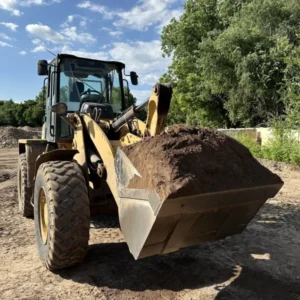Top soil is a critical component of healthy soil ecosystems, and plays a crucial role in the growth and development of plants. This uppermost layer of soil is rich in essential nutrients and acts as the foundation for all life on land. However, despite its importance, top soil is often taken for granted and its significance overlooked. In this article, we will explore the science behind top soil and its nutrient-rich benefits, highlighting the crucial role it plays in sustaining life on our planet.
Understanding The Importance Of Top Soil Nutrition
Top soil is essential for plant growth as it provides vital nutrients such as carbon, nitrogen, phosphorus, and potassium. These nutrients are essential for the production of plant tissues, regulating plant metabolism, and promoting root growth. Soil microorganisms play a vital role in breaking down organic matter into forms that can be absorbed by plants, making top soil a critical link in the nutrient cycle. The color, texture, and structure of top soil can also provide valuable information about its nutritional value, allowing farmers to optimize soil health and crop yield.
Breaking Down The Components Of Top Soil
Top soil is a complex mixture of minerals, organic matter, water, and air. It is typically made up of about 45% minerals, 25% water, 25% air, and 5% organic matter. The mineral portion of top soil is primarily composed of sand, silt, and clay, which provide the physical structure necessary for proper root development and water retention. The organic matter in top soil is made up of decomposed plant and animal materials, which provide essential nutrients for plant growth and act as a food source for soil microorganisms.

The Role Of Microorganisms In Maintaining Top Soil Nutrients
Soil microorganisms are living organisms that play a critical role in maintaining the nutritional balance of top soil. These microscopic organisms break down organic matter into smaller molecules that are easily absorbed by plant roots. In doing so, they release essential nutrients such as nitrogen, phosphorus, and potassium, which are essential for plant growth. Additionally, soil microbes also help to improve soil structure and porosity, allowing for better water and air circulation.
Exploring The Science Of Soil Microbial Diversity
The diversity of soil microorganisms is truly astounding. Just one teaspoon of top soil can contain billions of microorganisms, including bacteria, fungi, protozoa, and nematodes. Each of these organisms plays a unique role in maintaining soil health and promoting plant growth. For example, bacteria help to break down organic matter and cycle nutrients, while fungi form symbiotic relationships with plant roots, providing them with essential nutrients. The more diverse the microbial community, the healthier the soil and the better the overall plant growth.
The Impact Of Soil Management On Top Soil Health
Human activities such as deforestation, monoculture farming, and the use of synthetic fertilizers and pesticides have had a significant impact on top soil health. These practices can deplete nutrients, reduce soil biodiversity, and decrease soil fertility. However, scientists and farmers are constantly researching and implementing sustainable soil management practices to help restore and maintain top soil health. These practices include crop rotation, cover cropping, no-till farming, and the use of organic fertilizers, all of which aim to improve soil structure, increase organic matter, and promote a healthy soil ecosystem.
Unlocking The Nutrient Rich Benefits Of Top Soil Through Scientific Analysis
Advances in scientific technology have allowed for more in-depth analysis of top soil and its nutrient content. By using techniques such as soil testing and nutrient analysis, farmers can determine the exact nutritional needs of their soil and adjust their practices accordingly. This targeted approach helps to maximize crop growth, minimize waste, and promote sustainable farming practices. Furthermore, scientific innovations such as precision agriculture and digital soil mapping have allowed for a more detailed understanding of soil health, helping farmers to make data-driven decisions about soil management.
Preserving Top Soil For Future Generations: A Scientific Approach
The preservation of top soil is crucial for the sustainable production of food and the protection of our environment. Fortunately, scientific research and technological advancements are helping to develop more sustainable farming practices that focus on preserving top soil for future generations. By continuously monitoring and improving soil health and using sustainable management practices, we can ensure that top soil remains a valuable resource for years to come.
Conclusion
Top soil is a fascinating and crucial component of our ecosystem. Its nutrient-rich benefits are essential not only for plant growth but also for maintaining a healthy environment. The science behind top soil highlights the intricate and delicate balance that exists within this vital resource. By understanding the importance of top soil nutrition, breaking down its components, and exploring the roles of microorganisms and soil management, we can unlock its full potential and ensure its preservation for future generations.

Marian Shields, a dynamic marketing expert, orchestrates brand narratives with finesse and insight. With a keen understanding of consumer behavior and market dynamics, Marian navigates the ever-changing landscape of marketing strategy, crafting compelling campaigns that resonate with audiences worldwide. Through her strategic prowess and creative vision, she helps businesses of all sizes unlock their full potential and achieve tangible results in the competitive marketplace.




